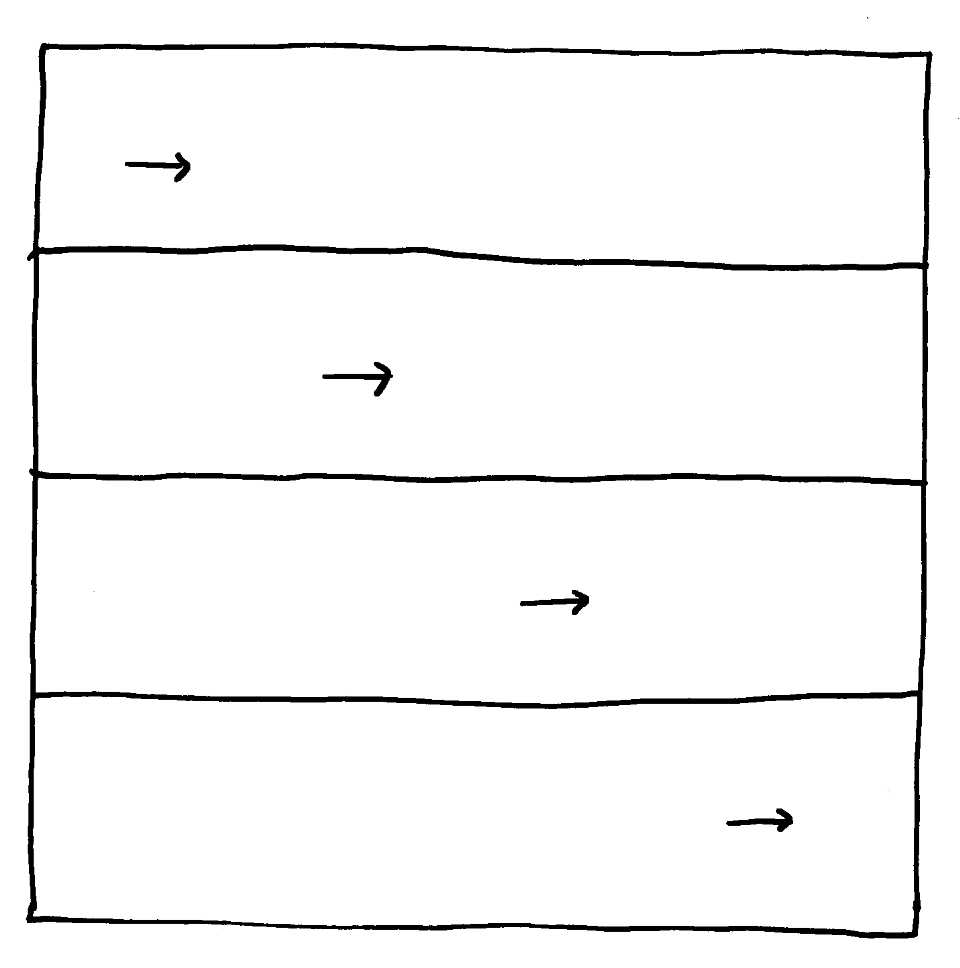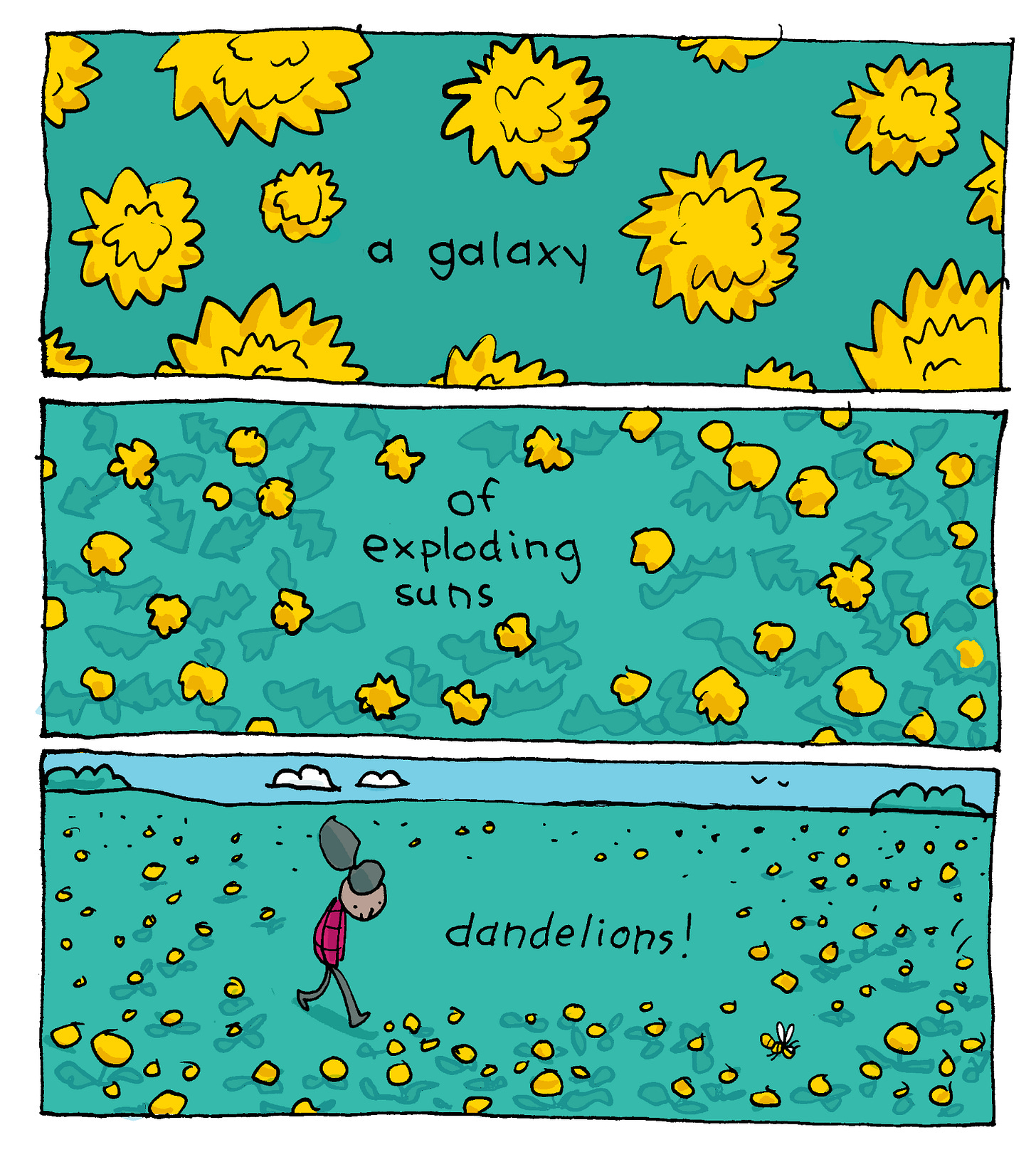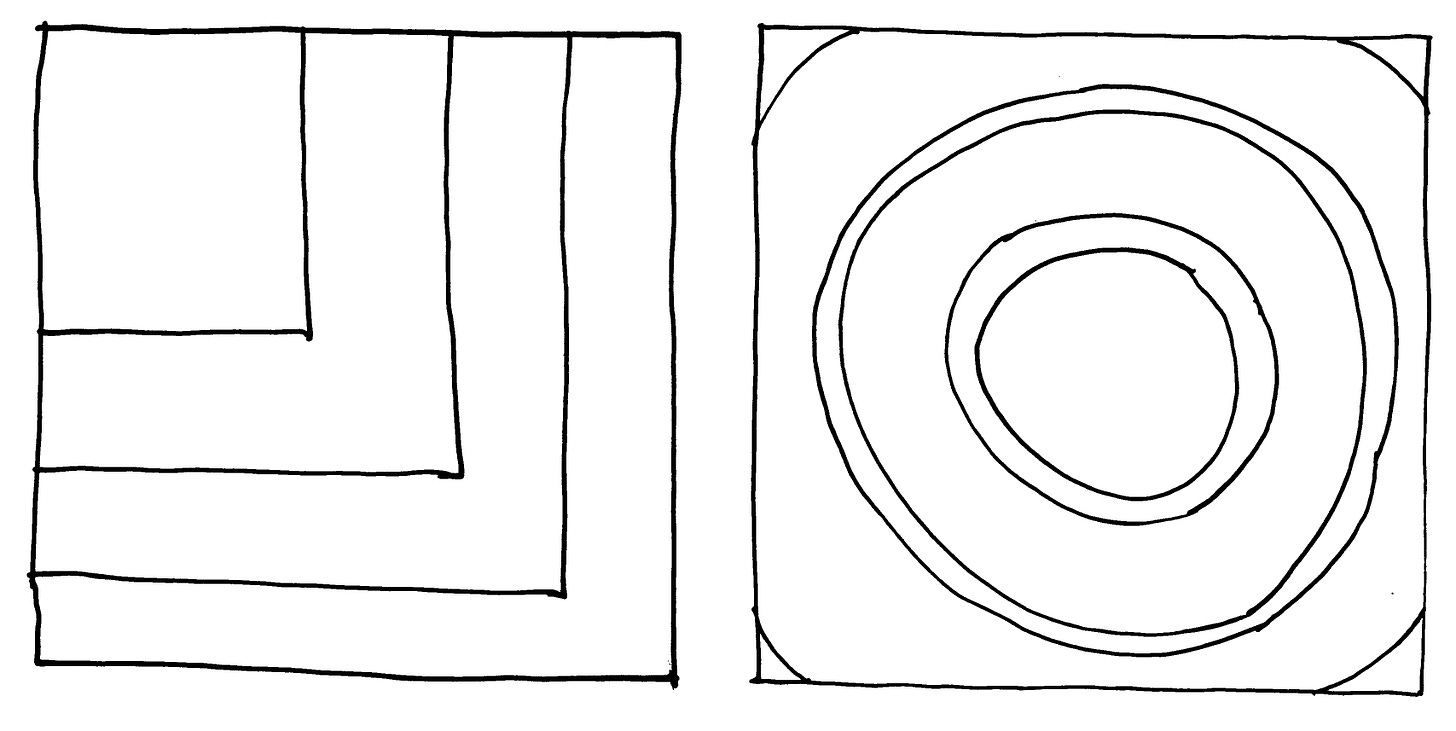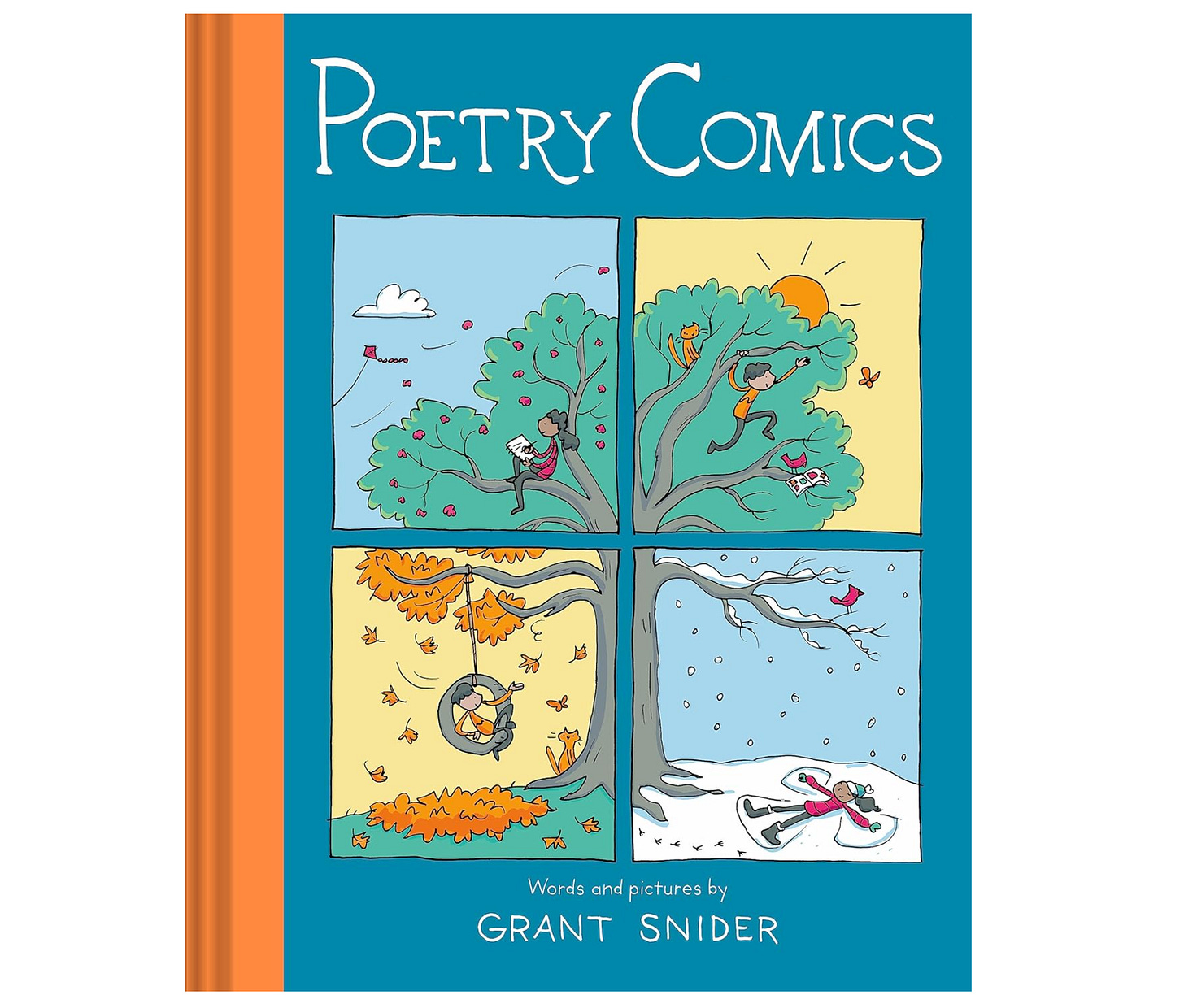A page of poetry comics begins simply.
Draw a four squares, stacked to make a larger square.
What have you created? The start of a four-panel comic, of course.
Look again. Maybe it’s something more. What else could your drawing be?
A window.
Open the window the world around you. Open up to the worlds inside you. Draw what you see. Write what you feel.
Engage all of your senses: sight, taste, smell, touch, hearing. Choose a few that stand out: I see… I hear… I feel…
You can even tie them together in the final panel: I am…
A poetry comic is a perfect way to capture the here and now. Where are you? What do you see? What are you thinking about?
Make a poetry comic that’s a window into the present moment.
Now get up and go for a walk down the block. Be sure to bring your sketchbook.
Let the page create a sense of direction. Let your character move horizontally through the panels of the comic as you move through the world.
Maybe you want to move faster. Dust off your bicycle and ride. Follow the page diagonally. Hang on tight…
Now let’s think vertically. Imagine jumping on a trampoline or bouncing a ball into the air. What goes up must come down, right?
Not every effort amounts to progress. Sometimes the more you try to move in one direction, the more frustrated you’ll get.
There are other ways to travel. Let’s zoom out. In only a few panels, you can achieve a dramatic shift in perspective.
The poetry comics page is a way to explore a subject from up close or far away. What do you notice as your perspective shifts? Now let’s zoom in.
Sometimes, the words of a poetry comic will come first. Keep a notebook of pure poetry. Would pictures add to the emotion of the poem? How could your poem be turned into a comic?
It might be a fun exercise to try this with a well-known poem you love. Say, one by William Carlos Williams or Emily Dickinson.
Other times, you’ll sketch a wordless comic strip. Can words enhance the pictures? Can they do more than merely repeat what’s happening visually?
Think about how to make a poem + comic more than the sum of its parts. Maybe the words are in contrast to what the drawing is showing. Maybe they deepen the visual metaphor. How can you create tension and resolution between the two?
Try not to merely create an illustrated poem. This is harder than it seems. The words and pictures should each contribute something new and essential.
For an exercise in writing only the essential, study the work of the famous haiku poets Basho, Issa, and Buson. Use your own observations of nature to create a haiku poetry comic.
Try the 5-7-5 syllable structure you learned in school for an added constraint. Choose details to suggest the season. If you can, make the last line a tiny revelation.
Now you have some exercises to create your own poetry comics:
Four Senses
Here & Now
Horizontal/Diagonal/Vertical Movement
Zooming In/Zooming Out
Poem + Comic
Haiku
But this is only a beginning. These are only basic suggestions. Where else can your poetry comics go?
Imagine the page as stairsteps. A ripple. The golden ratio. Triangles. Could a comic be three-dimensional?
In drama, there’s a technique called “breaking the fourth wall” where actors acknowledge they are characters on a stage. What if you broke the fourth panel?
Take your poetry comics to places you’ve never imagined. Most importantly, have fun. I’m excited to travel along with you.
My book POETRY COMICS will be published by Chronicle Kids Books in March, just in time for National Poetry Month. Pre-order now online or from your favorite local bookshop.


























A good read. Adding implicit movement to the panels and breaking 4th walls are techniques I like using too. Hope your book sells well.
This is pure gold. If I was still teaching I’d be doing a happy dance now. As it is, once I’ve finished working my way through the exercises in the Lynda Barry book ‘Making Comics’ this post is bookmarked as my next project. Thank you.